What is non-volatility, and how do dependent and independent
In apartment buildings, the central heating system is used in overwhelming quantities for heating. However, the quality of such services depends on many factors, including the condition of the heating main and equipment. The connection of the house to the heating network is also important. In this case, you will learn about dependent and independent methods of connection, as well as how to make the heating in the apartment non-volatile.
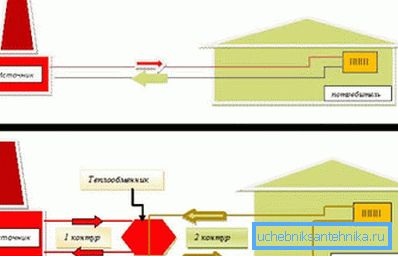
Connection options
Currently, there are two main connection schemes:
- dependent - it is considered the simplest, therefore it is most often used;
- independent - gained popularity relatively recently, it is widely used in the construction of new residential areas.
Below we will take a closer look at each method to find out which solution will be the most effective for ensuring comfort and coziness to your room.

Dependent connection method
Such a connection option usually requires the creation of in-house heating points, often equipped with elevators. In their mixing unit, superheated water from the external main network is mixed with the return flow, which makes it possible to reduce its temperature to the required one, as a rule, below 100 ° C. Due to this, the heating system inside the house is completely dependent on external heating.
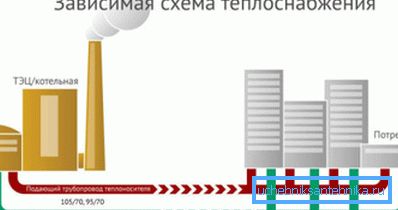
| Merits | The main feature of the scheme is that water is supplied to the heating and water supply system directly from the heating main, so the costs in this case pay off in a short time:
|
| disadvantages | As in any scheme, here you can find not only positive aspects, but also negative ones, among which it should be noted:
|
Connection methods:
- direct connection;
- with elevator;
- with the installation of a heating pump on the jumper;
- with pump mounted on flow or return;
- combined option - elevator and pump.
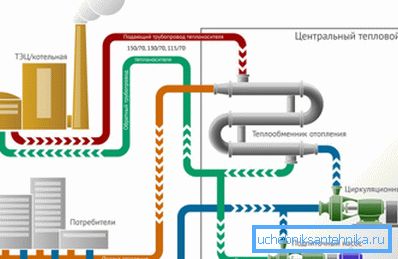
Independent connection method
Experts say that this variant of heat supply makes it possible to reduce the cost of resources by almost 40%.
In today's situation with their constant rise in prices, this will significantly save the family budget.
- The principle of operation is as follows:
- The subscriber’s heating system is connected with an additional heat exchanger;
- heating occurs due to two hydraulic insulated circuits - the main heating main heats the heat carrier of the closed internal heating system;
- in this case, the mixing of water does not occur.
Tip: if you decide to install this system, be prepared for the high costs of its maintenance and repair.
- Circulation of the coolant occurs in the heating mechanism due to the circulation pump, which regularly supplies it through the heating elements. In an independent wiring diagram, an expansion tank may be provided with a reserve of water for leaks. In this case, it is possible to maintain the circulation of the coolant with a certain amount of heat even in case of a heating main accident. In fact, this suggests that if the supply of hot water through the heating main stops, the temperature in the heated rooms will not drop sharply for a long time.
- The scope of application of this method of connection is quite wide. For example, it is used:
- for heating high-rise buildings that require an increased level of reliability of the heating mechanism;
- on objects where there is a room in which the entrance of outside service personnel is restricted.
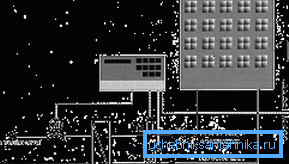
There is one condition - the pressure in the return pipe should be more than 0.6 MPa.
- Advantages of the method:
- the instruction allows temperature adjustment;
- big energy saving effect.
- Disadvantages:
- high price;
- complexity of repair and maintenance work.
Comparison schemes
- The dependent variant has one, but an important plus - low implementation cost. The elevator unit in a small country house is easily assembled with its own hands from valves, which can be purchased in a store or on the market. The only expensive part is only the nozzle, on which the capacity of the elevator depends.
- Independent scheme allows:
- adjust the temperature of the coolant;
- increase the efficiency of use, bringing this level to 40%;
- A large amount of pollution, such as scale, sand and mineral salts, does not enter the heating system. Coolant can be purified water or non-freezing liquids.
- can be easily heated for the needs of a hot supply of clean drinking water.

Non-volatility
Heating systems can be divided into those that need constant electricity, and no. In the first case, it is necessary to ensure the movement of coolant through pipelines and radiators.
Gas
- Non-volatile gas boilers for heating use manual ignition using a piezoelectric element. The flame is adjusted by a mechanical thermostat. If the coolant temperature exceeds the set temperature, the main burner is extinguished, but the supporting one continues to operate.
- In boilers with electronic ignition gas flow is completely stopped. After cooling the coolant to a critical temperature, the main burner is ignited by an electric discharge, and the heating is resumed. Often, electricity is needed for the operation of the blower fan that supplies air to the burner.
Tip: connect the heating boiler through a UPS with a capacious battery, if you often turn off the electricity for a short time.
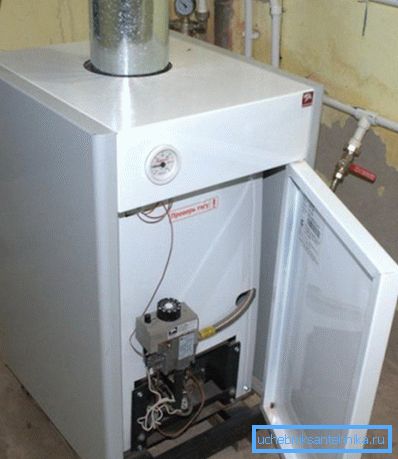
When choosing a scheme should pay attention to how often you have interruptions in electricity. If yes, it is better to purchase a non-volatile gas heating boiler. The device can work normally without any electricity.
Tip: when choosing non-volatile heating, be prepared that you will have to spend up to 20% of fuel to support the burner supporting the fire.
Conclusion
There are two heating connection schemes - dependent, in which the coolant directly from the heating main enters the system through the elevator, mixing with the return, and independent, where the internal circuit does not mix with the external one, which serves to heat it through the heat exchanger.
You also learned how the non-volatile boiler differs from the one where its connection to electricity is very important. Each option has its own characteristics, which were considered in detail. You just have to make a choice. Video in the article will provide an opportunity to find additional information on the above topic.